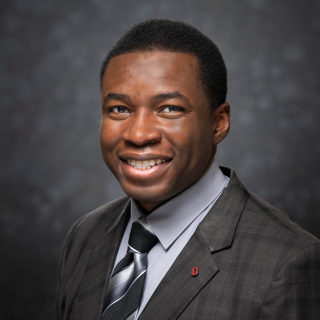Idahosa A. Osaretin

Dr. Idahosa A. Osaretin is an assistant leader of the Advanced Sensors and Techniques Group in the Space Systems and Technology Division. His research interests include all aspects of electromagnetic wave propagation — generation, transmission, reflection, and scattering — and related applications to remote sensing. Osaretin joined the laboratory in 2011 as technical staff member in the Applied Space Systems Group, where he designed sensor payloads for several Lincoln Laboratory satellite systems and successfully produced the first ever multiband radiometric image of the Earth’s atmosphere from a CubeSat payload. The research effort culminated in the successful NASA TROPICS mission, which delivered 3D observations of the Earth’s atmosphere at unprecedented high-temporal resolution. Osaretin also served as an instrument engineer and science data record scientist for the Advanced Technology Microwave Sounder (ATMS) instrument on the Joint Polar Satellite System program. He supported multiple successful on-orbit ATMS deployments, leading to the Robert H. Goddard Team Award for Science in 2017, the NASA Agency Honor Team Award in 2017, and the Robert H. Goddard Team Award for Exceptional Achievement in 2022.
Osaretin transitioned to the Advanced Sensor Systems and Test Beds Group, where he led the development of digital receiver backend systems, flexible and agile waveform generation techniques, and interacting multiple model multitarget tracker systems on high-powered radar systems for the U.S. Army Space and Missile Defense Command. With a focus on the missile defense mission, Osaretin developed technology solutions to deliver enhanced mission capabilities, advanced system functionality, and increased system and mission automation.
Osaretin transitioned back to the Space Systems and Technology mission area, where he currently supports the space domain awareness mission at the Lincoln Space Surveillance Complex. Current research includes the integration of high-powered transmitters, digital receivers, and automated command/control architectures to enable increased mission tempo, electronic protection, and long-range sensing.
Osaretin received a BS degree in electrical and computer engineering, an MS degree in electrical engineering, and a PhD in electrical engineering, all from the Ohio State University. He also obtained an MBA from the Kelley School of Business, Indiana University. Osaretin is an associate fellow of the AIAA and a senior member of the IEEE.